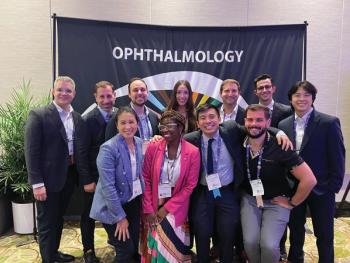
New research links retinal imaging and deep learning to improved schizophrenia detection
A research team has discovered that assessing deep neural networks and utilizing aggregation functions when evaluating retinal imaging results could potentially be utilized for detecting schizophrenia. Led by Pawel Karczmarek, PhD, the team found that among a wide variety of aggregation methods assessed, new generalizations and extensions of the Choquet integral may successfully aid in disease classification.
The researchers cited that previous research has confirms that specific
“One of the main goals of the article is to check how methods based on the aggregation of classification results work in classifying people as having schizophrenia versus healthy donors,” the study authors wrote. “Over 300,000 different variants of aggregation operators have been tested. Unfortunately, only a few versions provided satisfactory results that can be confidently said to improve the classification results significantly. Nevertheless, the results clearly show that new generalizations and extensions of the Choquet integral and its earlier extensions (so-called pre-aggregation functions) can successfully aid in disease classification.”
Additionally, classical and deep learning classifiers, in addition to using different variants of aggregation operators to improve classification results, were applied to
Participants included in the study were diagnosed with schizophrenia according to ICD10 classification (with code F20.x) and hospitalized in the Medical University Psychiatric Clinic in Poland. The chlorpromazine equivalent was 452.22 mg/day (SD = 128.2), 57% of patients received only atypical antipsychotic drugs, and the remaining patients (43%) received a combination of classic and atypical medications. Additionally, a healthy control group was included in the study.1
The device used for retinal imaging was an Optopol Copernicus REVO SD-OCT, with measurements generated using Optopol SOCT version 11.0.7. Exclusion criteria for participation included any previously diagnosed ophthalmological disease, diabetes, untreated arterial hypertension, history of trauma to the eye area, ophthalmologic surgery, head injuries with neurological consequences, eye refraction over ±5 diopters, glaucoma risk (DDLS scale ≥6), history of psychoactive substances addiction (except nicotine), inherited intellectual disability, and dementia. Each patient had 2 photos of each eye taken, totaling 4 photos.1
The dataset, which included 59 participants from the patient group and 61 from the control group, was then processed in several different steps, which were performed using custom programs created in Python. Additionally, Keras, Scikit-Learn, and TensorFlow libraries were also utilized. According to study authors, evaluating OCT features including macular thickness, retinal macular volume, combined outer nuclear layer and outer plexiform layer, macular and peripapillary retinal nerve fiber layers thickness, and ganglion cells complex made up the most important category evaluated in the research. Classification on said data was completed based on both deep neural networks and an aggregation procedure. One of the most successful aggregation procedures was the Choquet integral, which considered both the individual weight of each classifier and how well their results align.1
“In this manner, the Choquet integral is more than just a simple averaging method – it reflects an intelligent system that better utilizes the ‘votes’ of individual classifiers by considering both their individual importance and their collaboration,” the study authors stated. “It is like a team of experts working together, each specializing in a different area, where the final decision is more accurate because it considers not only individual opinions but also how well the experts agree. This ensures that the resulting outcome is more precise and trustworthy.”
Reference:
Karczmarek P, Plechawska-Wójcik M, Kiersztyn A, et al. On the improvement of schizophrenia detection with optical coherence tomography data using deep neural networks and aggregation functions. Sci Rep. 2024;14:31903. https://doi.org/10.1038/s41598-024-83375-7
Newsletter
Keep your retina practice on the forefront—subscribe for expert analysis and emerging trends in retinal disease management.




